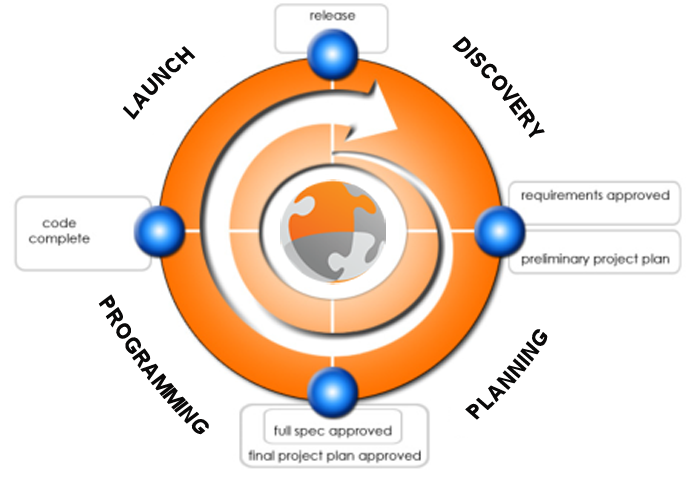WEBSITE DESIGN & PROGRAMMING
Our four step process has been developed to ensure clear details.
This is so our clients receive a straight forward delivery.
OUR PROCESS

- Vision Document Helps align your product with your business objectives, gives you Cost/Benefit & risk analysis and Solution Strategy to streamline project planning.
- Gap Analysis Will provide you with the Solution roadmap you need to quickly and effectively meet your business objectives. If needed, we can identify your current direction and extend the feature set.
- Business Case ROI Will provide you with the cost/benefit analysis you need to make informed decisions about your technology and substantiate why you need it.
- Feature/Function Analysis Implement some standard enterprise functionality that typically involves buy/build/blend analysis with cost sensitivity to map out the most effective solution strategy.
- Prototype conveys application behavior to the client presented with 3 revisions for feedback.
- Requirements Document conveys how an application should behave and may be used in concert with a Functional Specification.
- Use Cases will contain and convey the application behavior.
- Functional Specifications contains the specific application requirements to be developed regarding the form, field, business logic, navigation and control level.
- Technical Specifications contains specific application, platform and environment requirements necessary to support the product or application.
- Project Schedule typically a Microsoft Project Schedule GANTT chart to manage the project from a timeline perspective.
- Code is the primary deliverable of the development phase. All project information and inputs are combined to produce a high-quality application. During the course of coding there may be initial review points and in-line quality assurance execution, as well as code reviews and technical reviews.
- Status Report is the project management document that informs the client of the development progress. It contains functionality complete, functionality to be developed next, high-level management issues, project detail issues as well as project timeliness and cost to date.
- Updated Project Schedule is the Project Schedule control document, which is then updated during the Development Phase to show progress. A schedule baseline is kept to track whether the project is on schedule or not.
- Change Control Documentation is used to alter what should be developed in the current development cycle. It should be used sparingly as it is relatively expensive at this stage of the development cycle to make changes.
- Test to Launch are the results from implementing the Test Plan and Test Cases. These results are gathered during the first stage of the Launch Phase. Results include defective application behavior, date information, bug priority, estimates to fix and resolution information.
- Maintenance Documentation Once an application is in Production, a Maintenance Document is a technical document that assists in maintaining the application. It will include configuration information, environment information and support information and maintenance information.
